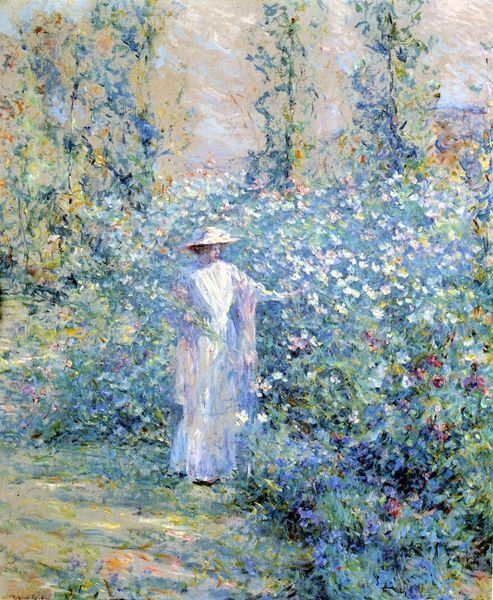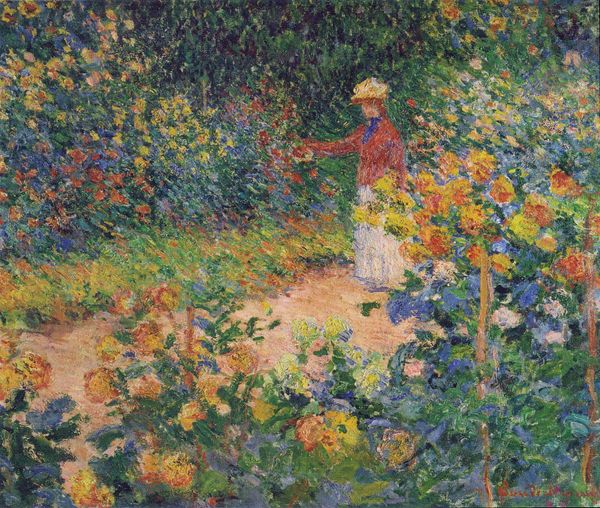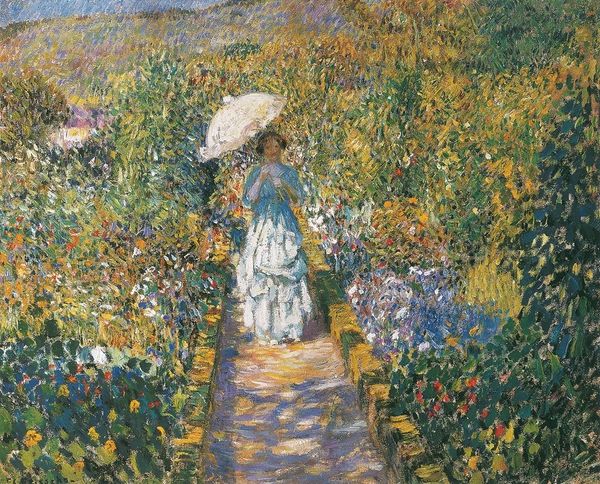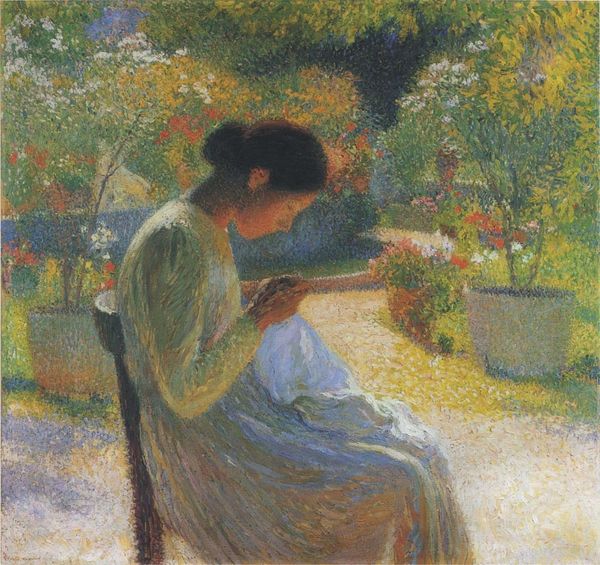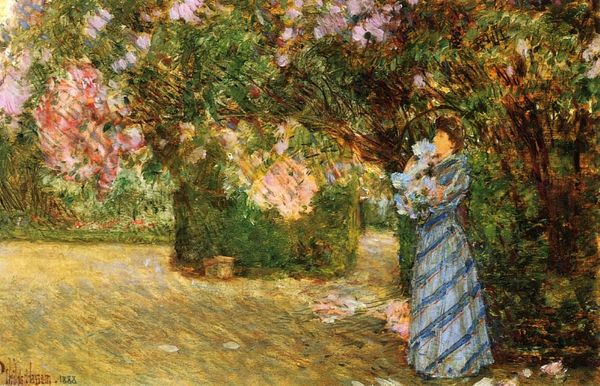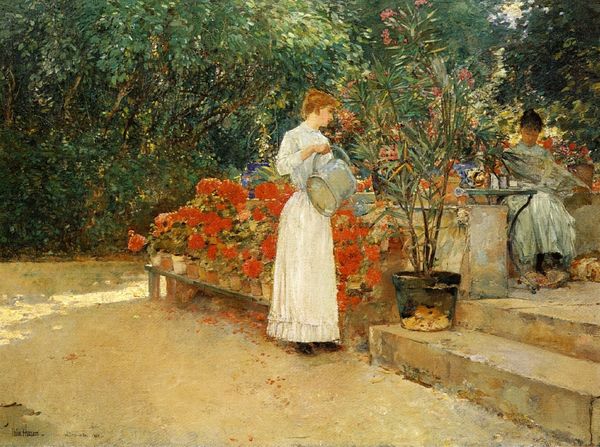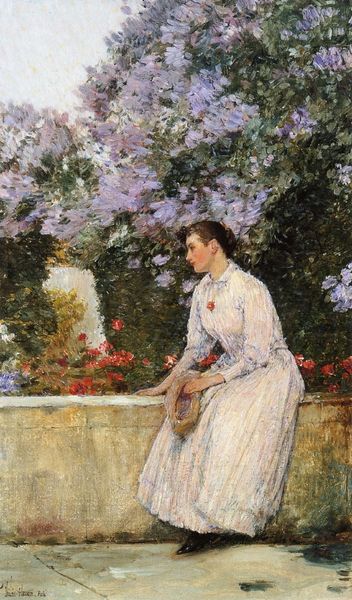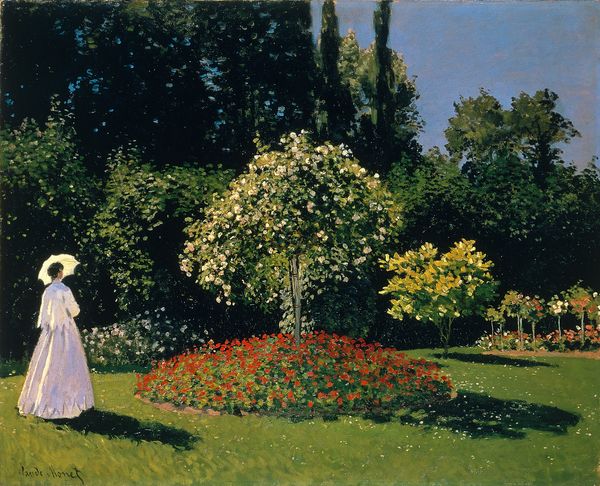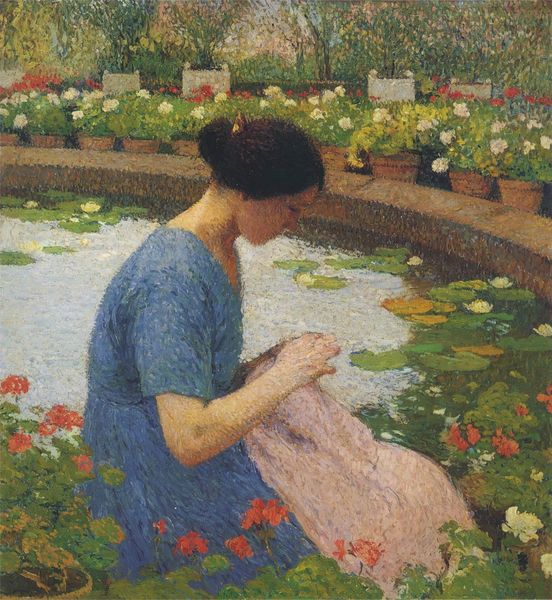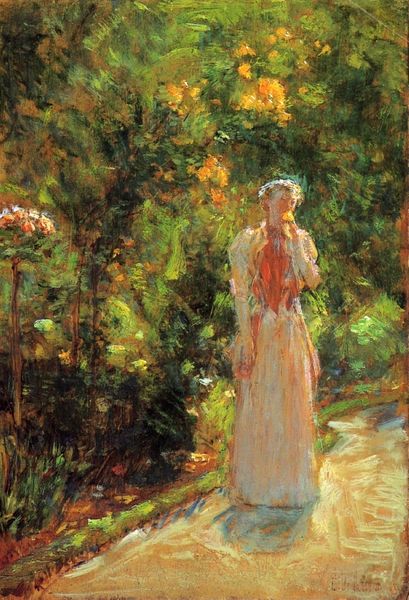
#
gouache
#
tree
#
garden
#
abstract painting
#
impressionist landscape
#
possibly oil pastel
#
oil painting
#
fluid art
#
acrylic on canvas
#
forest
#
painting painterly
#
park
#
watercolor
#
expressionist
Copyright: Public domain
Curator: This is Childe Hassam's "Lady in Flower Garden," painted in 1891. Editor: My first impression is just... tranquility. The muted colors and soft brushstrokes create a very serene atmosphere. The female figure, though seemingly simple in form, appears grounded and immersed in this verdant, thriving world. Curator: The composition relies heavily on juxtaposing textures and color fields. Observe how Hassam balances the densely packed floral area on the right against the comparatively open, less defined space to the left where the figure is positioned. Editor: Right, but the very act of depicting a lady within such a space, framed by nature's abundance, subtly speaks to idealized visions of women and their association with domesticity. This painting fits neatly into the period's cultural narratives surrounding femininity and the natural world, especially those visions embraced by wealthy landowners at the time. Curator: Perhaps. However, let us also consider the artist's brushwork here. The divisionist touches, almost pointillist in places, are not simply representational; they activate the surface, directing our vision around the plane itself rather than solely toward a perspectival vanishing point. It flattens the spatial perception in some ways. Editor: That flattening does work to universalize the feminine presence, taking us out of a concrete, recognizable locale to a place in the collective imaginary of femininity in full bloom. It reminds me of Kate Chopin's heroines. The art invites viewers to meditate on issues of identity, selfhood, and agency within these cultural frameworks. This, and paintings like it, become stages upon which society's perceptions of women are not merely represented, but enacted. Curator: Interesting how you bring a contemporary viewpoint to interpret the subject. To my eye, Hassam masterfully employs the available resources of color theory and pictorial strategy. The eye perceives an interplay between forms rather than an absolute truth regarding representation or meaning. The forms generate meanings in relationship. Editor: Precisely. Art doesn't just reflect the world; it actively shapes it. Thanks for helping clarify some of that shape! Curator: The dialogue between our two approaches deepens my perspective as well, always!
Comments
No comments
Be the first to comment and join the conversation on the ultimate creative platform.
